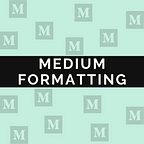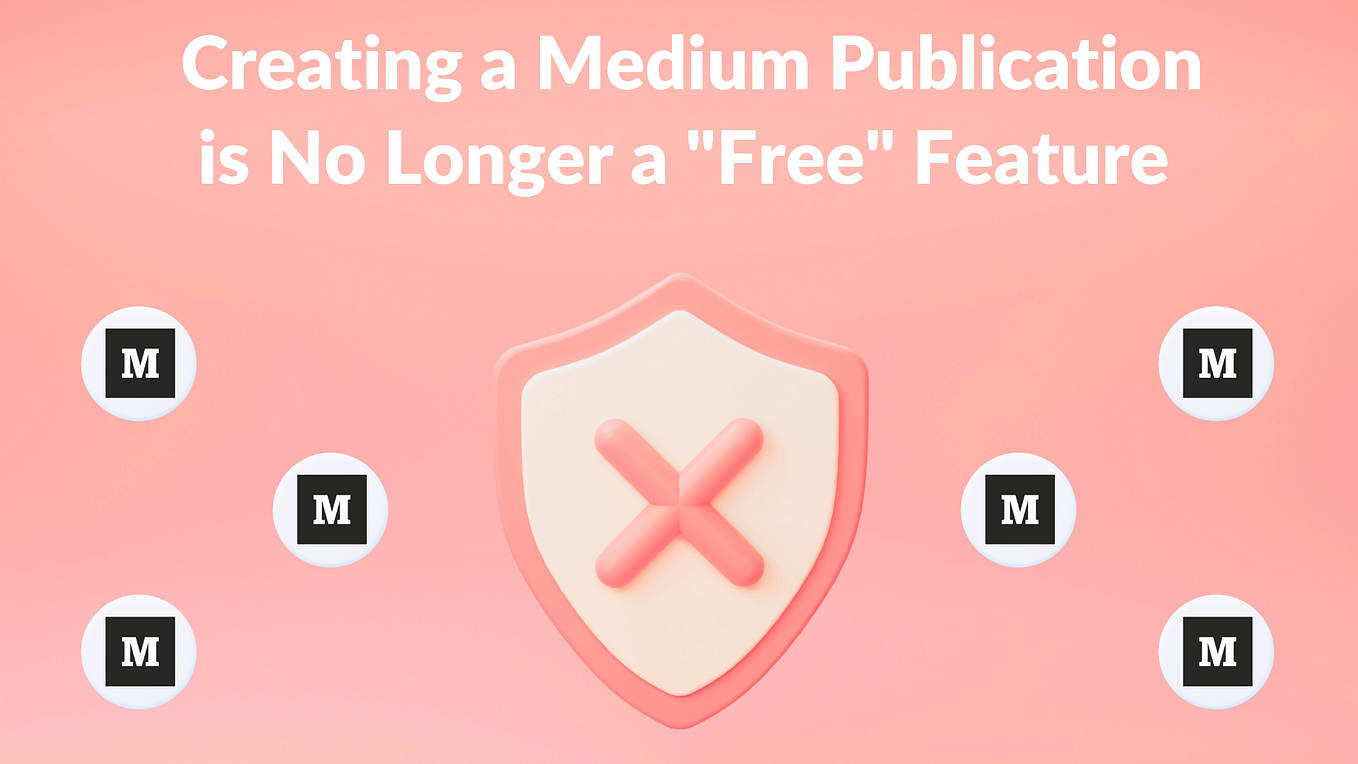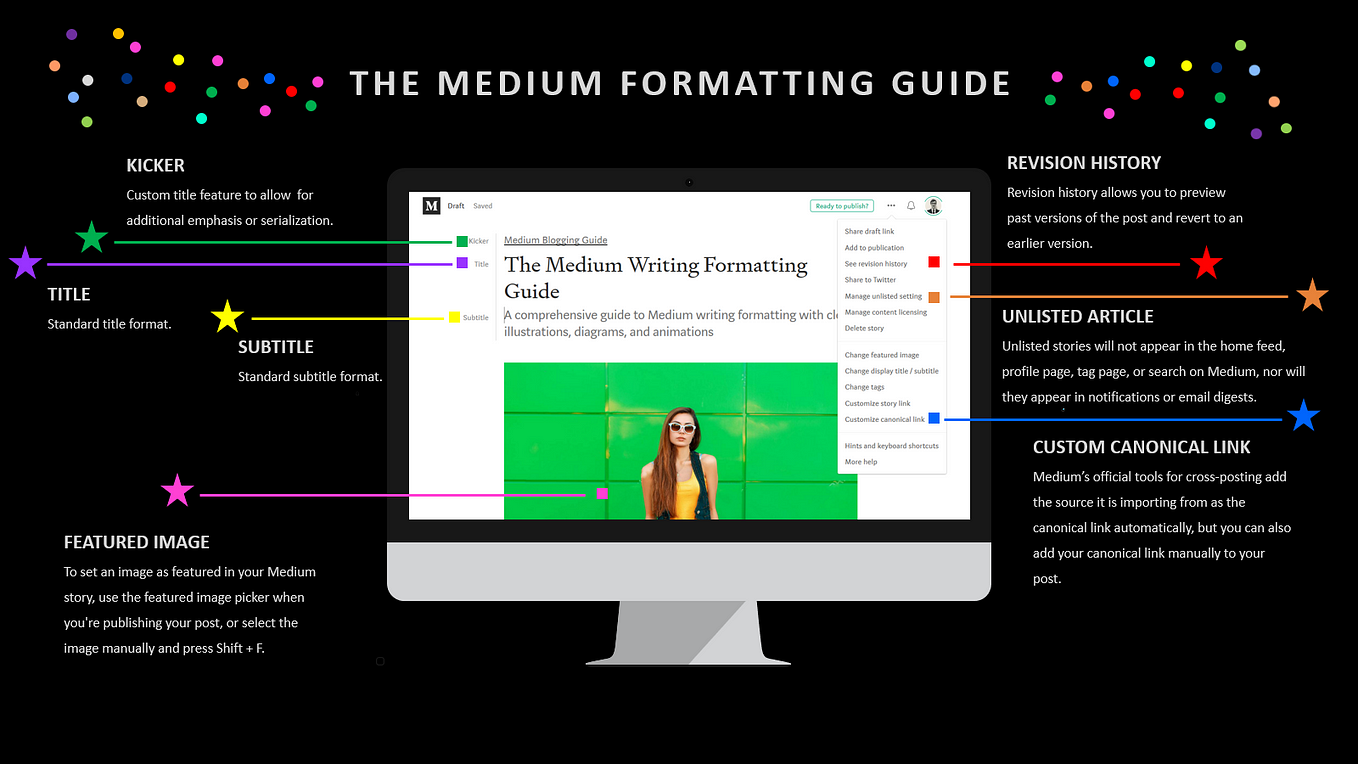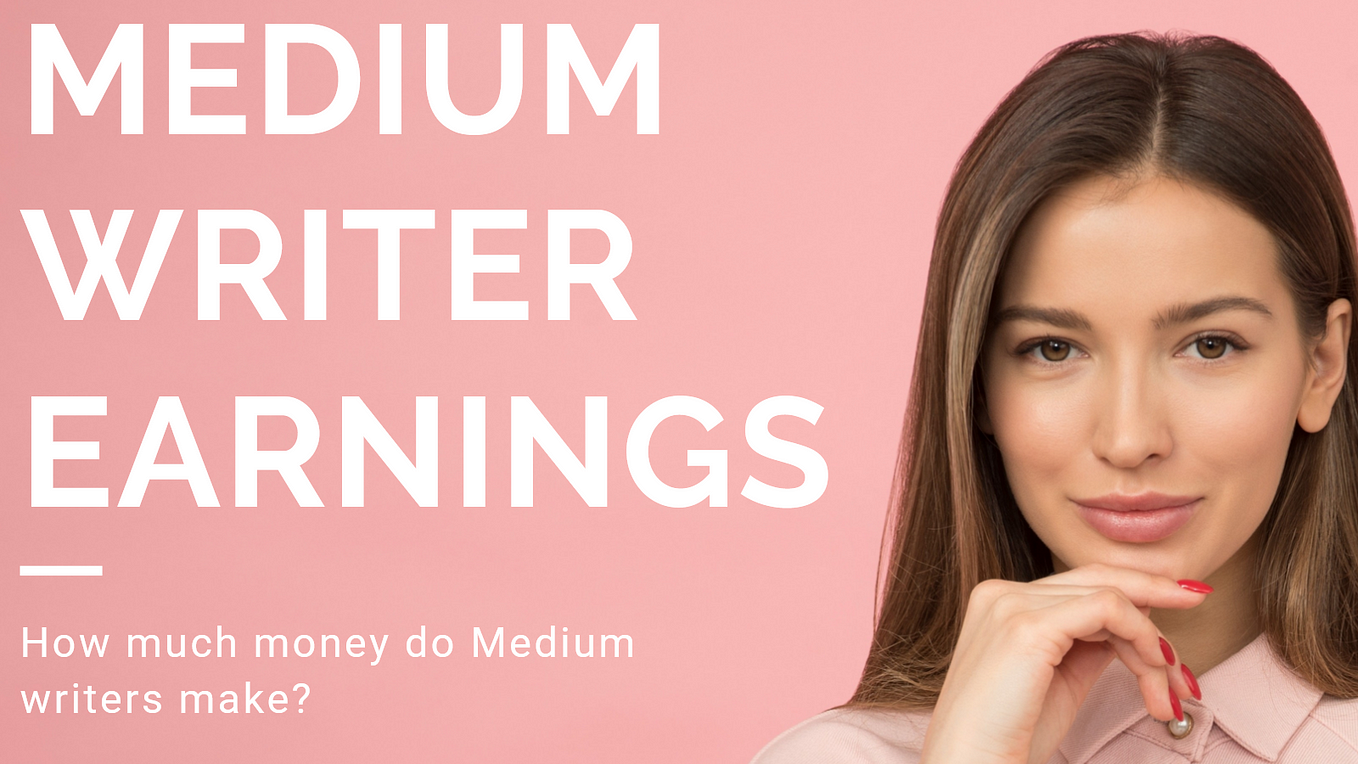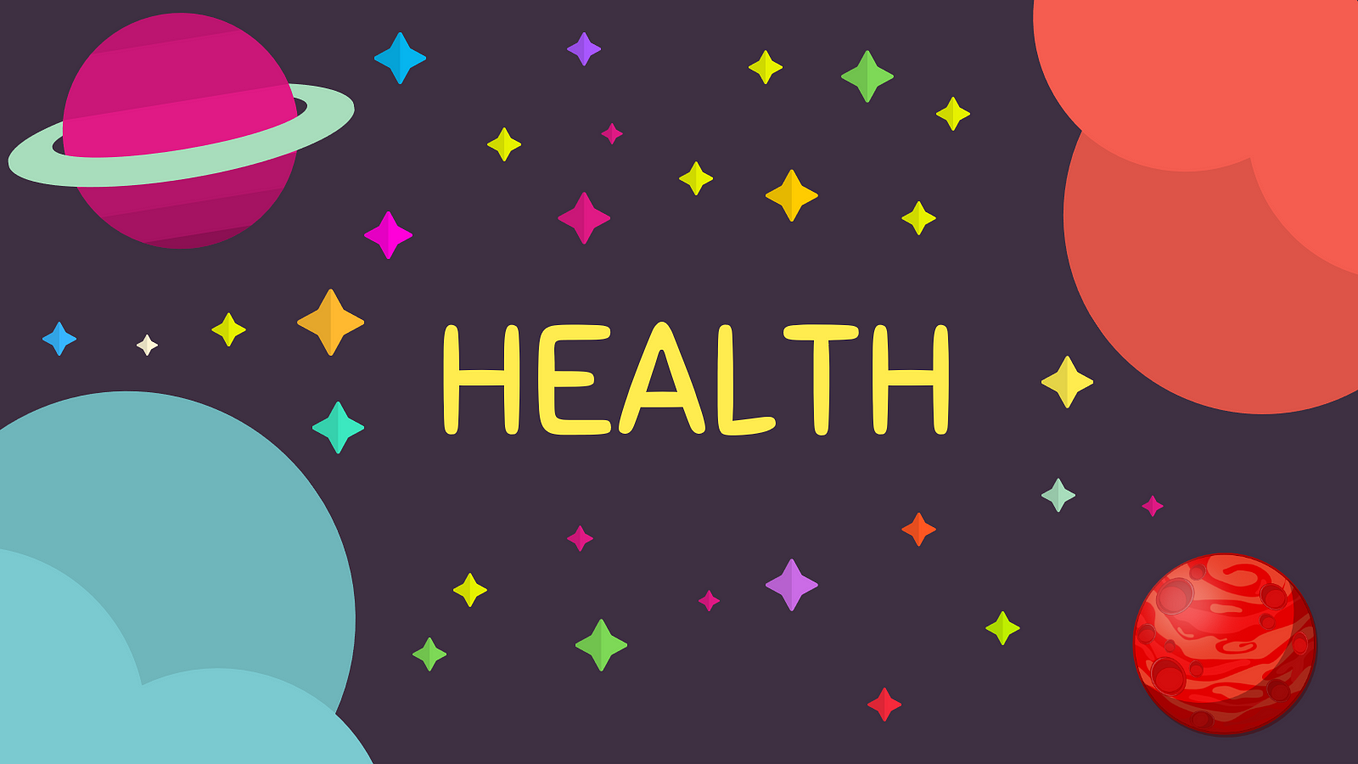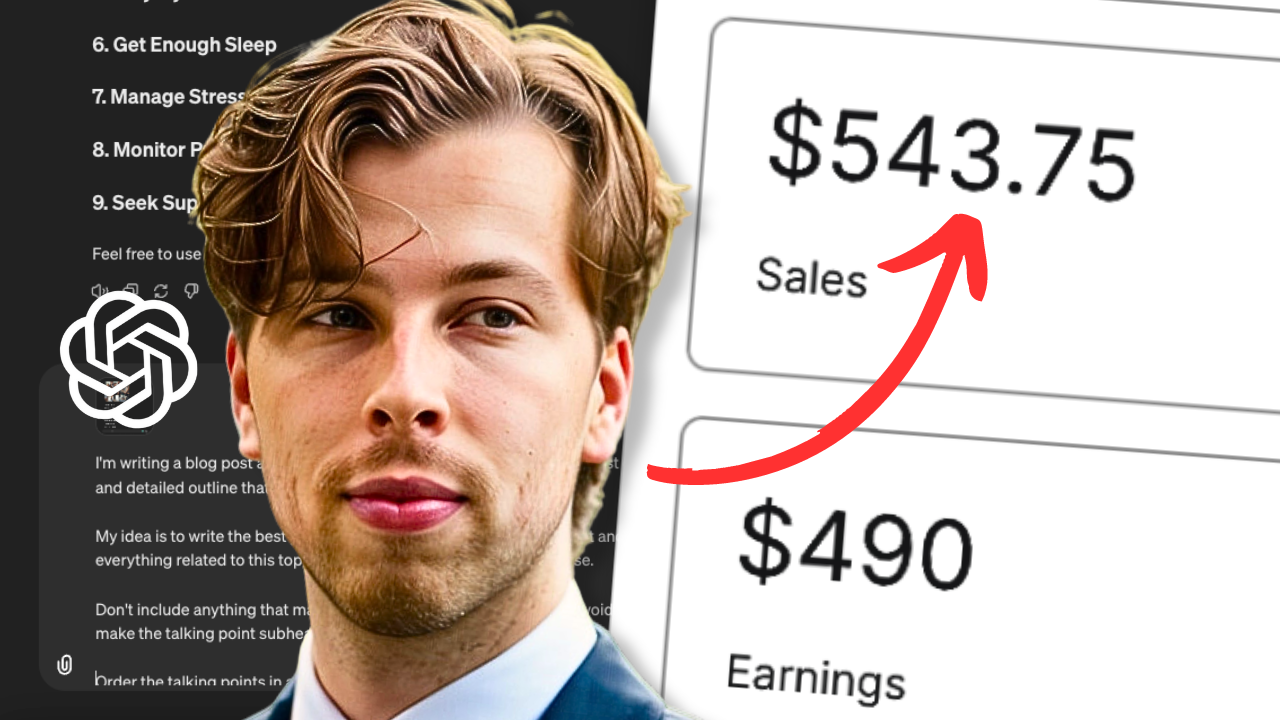A Brief History of Medium
Well, maybe not brief…
“In the beginning Ev created the platform and the publisher.
And the page was without form, and void; and darkness was upon the face of the deep. And the Spirit of Ev moved upon the face of the waters.
And Ev said, Let there be whitespace: and there was whitespace.”
Blogging Guide 1:1
In all seriousness, many of the current writers on Medium don’t understand the platform’s origin and evolution.
While it is possible that a new user could post their first article, strike gold and go viral, this is the exception, not the rule.
If you want to succeed on any digital publishing platform, it is essential that you understand how the platform evolved over time, what triggered these changes, and why certain changes affected writers differently.
Medium has a long and confusing history. While not every minute detail from the past 8 years is needed to succeed as a writer, understanding Medium’s evolution allows writers to better anticipate future platform changes, and adjust their content accordingly.
The following history is broken down by year. I have done me best to chronicle the major highlights that occurred throughout each of these periods.
Medium was created by Ev Williams, one of the founders of Twitter and Blogger, in August 2012. In many ways, Medium is the natural extension of Williams’ previous companies. Medium makes writing and publishing content longer than 140 (now 280) characters incredibly simple.
As explained in Ev Williams’ inaugural post:
Medium is a new place on the Internet where people share ideas and stories that are longer than 140 characters and not just for friends. It’s designed for little stories that make your day better and manifestos that change the world. It’s used by everyone from professional journalists to amateur cooks. It’s simple, beautiful, collaborative, and it helps you find the right audience for whatever you have to say.
The site launched with generally positive fanfare:
Evan Williams just can’t quit the online publishing business.
First he founded Blogger, which he sold to Google. Then he cofounded Twitter with Biz Stone and Jack Dorsey.
Now he’s on to his third act, this time with Biz Stone and Jason Goldman. The centerpiece of his newest startup effort is called “Medium,” which is another new publishing company.
Blogger allowed people to express themselves in long form. Twitter allowed people to express themselves in short form. Medium encourages people to express themselves in a medium length format.
What makes Medium different from Blogger is that it sorts blog posts by topic rather than author. It combines the best features from Pinterest, Tumblr and the new Digg.
It takes Pinterest’s idea of collections and brings it to text. Users can vote up content, like Digg or Reddit, so only the best posts are presented above the scroll. Like Tumblr, Medium has a lot of themes to choose from to help distinguish the collections of content.
This early characterization of Medium is important to understand— Medium was different from Blogger because it sorts blog posts by topic rather than author.
This seems to be a balance that Medium has struggled to maintain over time. On one hand, Medium loves to showcase the writing of famous people, with established audiences. On the other hand, Medium sells itself as a revolutionary content discovery tool. So it deliberately de-emphasizes who is writing an article and emphasizes what they are writing about (hoping to deliver better content to their readers).
As explained in that first post by Ev Williams:
Through a combination of algorithmic and editorial curation, posts on Medium get spread around based on interest and engagement. Some get hundreds of thousands of readers — and not because they were written by famous people. Medium is not about who you are or whom you know, but about what you have to say.
August 2012 Screenshot of Medium Home Page:
At this point, Medium content is largely private and in a read-only beta mode.
Medium is built around collections. Medium is still invite-only, but it has announced that soon anyone will be able to start a collection and publish their own photographs or writing.
Collections appear in a very visual grid format, with the highest-ranked post always at the top.
The idea is that people can read, view and vote on content without worrying about developing their own audience. How prominently your contributions appear in Medium collections is entirely based on how many people have voted on it. Collections can also be private — for sharing with a select group of family or friends — or public, for the world and his wife to enjoy.
While many links to collections from this era no longer work (you may be directed to another page first, as it appears they were all moved), here are a few screenshots from this era:
Many of these can still be found under the Medium collections directory:
In November of 2012, in an unlisted post, Williams expands on some of the features of the Medium editor and the rationale for them:
Early Medium Editor Toolbars:
In November 2012, Medium also announced some new hires from the traditional publishing world, such as Kate Lee, a former literary agent at International Creative Management (ICM). Lee was hired as Director of Content and will be “reaching out to talented individuals, be it professors, authors or people with something to say, to bring their content to the Medium community.”
Also in November 2012, Ev Williams writes one of the first public pieces explaining his thoughts on building Medium, in What I Learned Building Medium (So Far).
Some key takeaway points:
- Even if they’re awesome, having too big of a team will slow you down.
- Nothing clarifies focus like a date. (Or: If you don’t have a tough constraint, make one up.)
- Designing a product from scratch is always hard.
In December 2012, Medium sends an email to users to its beta users, announcing stats, the intention of creating a reader commenting feature,
Stats: As of this afternoon, you can see what kind of attention your posts are getting and how people are reacting to them. The goal of Medium is to enable and support quality, rather than just popularity, so our philosophy around stats is that we need to provide meaningful metrics. Medium stats provide feedback that normal web analytics don’t give you.
Reader Interaction: One thing you may have noticed about Medium is its lack of comments at the bottom of pages — which seems to have become an unfortunately ubiquitous feature of the web. We believe that normal web comments don’t add a lot of value on average (at least of the type we’re looking to create). However, we do think there is value to be had in reader feedback and interactivity. So, we’re working on a way of allowing reader participation (on an optional basis) that offers something new and different that comments don’t. We hope to have it on the site (at least to test out) by mid-January.
Up until this point, as a writer, you’d only be notified if your post was added to a “Collection,” a way of someone re-sharing your piece. The new stats section gives you more of an idea of how many people actually read your story:
The dashboard in stats shows views, reads, and recommendations. Recommendations are an action you can take on a piece you’ve enjoyed, which pushes it up to being featured on the site (a precursor to claps).
In February 2013, in a recap of The 100 Biggest Stars In Silicon Valley in 2012 by Business Insider, Ev Williams is ranked #36, referencing his platform, Medium:
In April 2013, Medium announces it is operating as its own company, with a staff of 30. Previously, Medium was just one of many projects through The Obvious Corporation, Ev Williams’ startup incubator.
Also in April 2013, Medium acquires the longform science journalism site Matter, which originally launched in 2012 with a successful Kickstarter campaign.
Matter was the Kickstarter-backed, science and technology journalism startup cofounded by former GigaOM European correspondent Bobbie Johnson. Medium acquired Matter for an undisclosed sum, the companies plan to announce Wednesday.
Matter raised over $140,000 through Kickstarter, and Williams was one of its 2,566 backers. Matter, which publishes one story of at least 5,000 words every month and sells them for $0.99 apiece, “will remain a standalone company following the acquisition.”
In May 2013, Medium announces it has added some tools to “bring people together while they’re writing.” The collaboration tools were actually far more useful (imo) than they are in present day, although they introduced many of the features writers utilize today:
Since starting Medium, we’ve maintained a focus on collaboration. We’ve touched on it with collections, which allow many people to contribute to the same idea. But today we’re taking it a big step forward with pre-publish collaboration:
You’ll now see this button in the top right when you’re editing a new post. Click it to reveal a secret link to your post, which you can send via email to anyone you want feedback from. Those invited can leave feedback via our notes feature — which now includes highlighting text:
Once you make changes (or not) based on this feedback, anyone who made notes before you published will be listed in the “Thanks to” section of the post:
In August 2013, Medium comes under fire after a series of posts draw negative attention to the site, and force it to address the question of whether it is a publisher or platform:
In a (now-deleted) Medium post, a writer suggested that her family’s Google searches were being monitored by the government; it turned out not to be the case, because it was the writer’s husband’s employer who reported his Google history to the police.
Hamish McKenzie, then at PandoDaily (now founder of Substack), writes:
Medium has some clearing up to do. It needs to get the message across that even though it sometimes appears to endorse some content — by promoting the posts, juicing their distribution, and, in some cases, even paying the writers — that doesn’t mean it is vouching for its veracity. It would help, also, if the company tweaked the titles of its editorial team so it was clear that those people are responsible for direction and curation rather than actual copy-wrangling. And it should more clearly explain how Matter fits into the overall scheme of things.
Medium responds with the following tweet:
On October 25th, 2013, Medium sent out an email with the news that anyone can now sign in and start writing.
It’s important to note that while Medium was open to all after this announcement, there was no mention of a Partner Program yet.
Streamed live on Nov 21, 2013, was this really cool video which provides a great look at the site and its design at the end of 2013.
December 2013, Matter fully integrates with Medium and stops charging for content.
In January 2014, Medium closed a $25 million round of financing, the company confirmed, marking its first major funding raise since it launched a little more than a year ago.
Among the multiple parties involved in the round are Google Ventures (courtesy of general partner Kevin Rose), SV Angel’s Ron Conway and a number of other investors, such as Chris Sacca and Peter Chernin.
In May 2014, Ladybits, one of Medium’s first paid collections, announces they are leaving the platform.
At the same time, Medium stopped curating a universal homepage where people browsing Medium.com would be exposed to the best writing on the site. That meant that the people who were coming across LadyBits content because it was good, who wouldn’t normally have been exposed because they weren’t searching for feminist tech perspectives, weren’t finding us. Our traffic fell by about 50%, as did our income.
In June 2014, Steven Levy leaves his job as a senior writer at Wired to launch a tech publication for Medium. “One of the appeals of it is it’s not in this secure, established situation,” he tells Digiday. “It is something where all the answers aren’t there.”
In July 2014, Medium experiments new revenue generating models, and runs a series of ads sponsored by BMW.
BMW is sponsoring Re:form, a collection of posts about design edited by Sarah Rich, a former senior editor at Dwell magazine. It’s the first time a collection, Medium’s term for a digital publication, will have a sponsor. It’s also the first attempt by Medium, created in 2012 by Twitter co-founders Evan Williams and Biz Stone, to generate revenue.
Medium has committed to publish 100 stories about design on Re:form over five to six months. For those stories, BMW is guaranteed a minimum number of minutes of total reading time, a metric accumulating the amount of time people spend with an article instead of the number of people who see an article or the page views it gets.
In October 2014, Medium addresses its struggle to make the platform clear and “obvious.”
In February 2015, Medium announces a number of new updates to its publishing platform. They include a tagging system (which means more structured data), a redesign of post presentation called The Stream, and an inline editor that’s supposed to make it easier to start writing
These updates are or are similar to the versions found on the platform today:
In April 2015, Esquire launched a content partnership with Medium, through which the Hearst-owned title will present audio recordings of interviews with celebrities like George Clooney and Clint Eastwood as animated videos.
The animated interviews are being culled from Esquire’s popular “What I’ve Learned” column, which typically features subjects like the late Elmore Leonard dispensing male wisdom. As part of a 10-week series on Medium, Esquire will also produce 10 new “What I’ve Learned” text pieces for the platform, and will also resurface 10 previously published pieces from the magazine.
In May 2015, Ev Williams posts an article, titled “Medium is not a publishing tool.”
In the last few months, we’ve shifted more of our attention on the product side from creating tool value to creating network value. What does this mean? Obviously, one form of that value is distribution. And there’s no doubt that something published on Medium has a higher likelihood to find an audience than the same thing published on an untrafficked island on the web…That’s why I say Medium is not a publishing tool. It’s a network. A network of ideas that build off each other.
In June 2015, Business Insider reports that it has learned that structural shifts inside Medium are rampant. This is not only in editorial practice but in management as well.
In an article, Business Insider specifically cites the following “issues” at Medium:
The Message, a tech-culture site where all the content was created by outside contributors, will now be managed by Matter, its in-house tech culture site.
Matter will no longer be considered its own independent site in terms of staff management. Staff writers are no longer “writers at Matter” and are instead considered “Medium writers.”
Medium has completely axed many independent budgets for freelance projects, people close to the situation told Business Insider. This came after a series of meetings a few months back when site editors were asked to present how they intended to be more “social” with their content. The executives were not persuaded and the major shifts began to take root.
War Is Boring — Medium’s military focused site — announced last month that it was looking for a new publisher.
Re:form and The Archipelago have both stopped publishing and have let their writers go. (The Archipelago focused on personal essays.)
In September 2015, Medium, raised $57 million in a round led by Andreessen Horowitz. It’s the three-year-old company’s second funding round, and people familiar with Medium say it places a $400 million pre-money valuation on the startup.
In October 2015, Medium introduces responses.
What are responses?
At the bottom of every Medium story, there’s a text field where you can respond to the story you just read:
When you find a story on Medium that inspires, enrages, or otherwise engages you, and you want to respond, just start typing.
After you publish your response, it becomes its own stand-alone story on Medium. It is available on your profile page, and distributed out to your Medium followers. It also includes a link back to the original story to which you are responding.
Also in October 2015, Medium announces content partnerships with The Awl, Discovery Communications, Fusion, Steven Johnson’s How We Get To Next, Mic, MSNBC, and Time Inc.’s Travel + Leisure.
In the course of delivering several award-winning native campaigns on Medium with top-tier partners like BMW, GE, Microsoft, Marriott, and Intel, we’ve seen that people on Medium will read great, professionally-produced content wherever it comes from — including in partnership with brands.
So we’re starting to develop new native advertising solutions and paid content models that we think will help professional writers, bloggers, and publishers earn revenue on Medium, via an engaged audience they’ve built and the thoughtful content they create.
In January 2016, Politico reports that “in a sign of how much Medium is banking on Washington’s frustration with traditional news outlets, the San Francisco-based company established a D.C. office last spring and has spent months recruiting new voices in Washington.”
Medium, the three-year-old online publishing platform run by one of the founders of Twitter, has spent much of its infancy assiduously courting members of the political class.
The pitch is clear: Get your message out with none of the editorial interference that comes with old-school media.
The effort has paid off. Hillary Clinton, under fire for not taking a stand on the Keystone XL pipeline, turned to Medium in September when she decided to come out against the project. John Boehner, on the verge of fulfilling a lifelong dream of meeting the pope, posted a chatty preview of the visit on Medium. And Mitt Romney, with the GOP field on tenterhooks, announced on Medium that he would be sitting out the 2016 presidential race.
But while a growing legion of Washington power brokers is sold, there’s an uneasiness taking shape among some in the press.
The Knight Foundation earlier this month awarded a $140,000 grant to PolitiFact, the Pulitzer Prize-winning website run by the Tampa Bay Times, to fact check the growing number of claims politicians are making on Medium.
In April 2016, Medium announces that The Awl and The Hairpin, Electric Literature, Pacific Standard, The Black List, Femsplain, Monday Note, and NewCo Shift will migrate their content to the platform.
This announcement is important because it is the first concrete reference to Medium’s strategy to generate revenue through monthly subscriptions that readers would pay to Medium:
Eight small independent sites will fully migrate to Medium Tuesday, including The Awl and The Hairpin, sibling sites of The Billfold, which already migrated over last December; plus Pacific Standard, The Black List and Femsplain. Four others are in the pipeline, including Monday Note and NewCo Shift, a new business media brand from John Battelle’s NewCo. Medium also named several sites that will start putting original content there, including Time Inc.’s Money and Fortune and Atlantic Media’s National Journal.
Medium also is announcing new incentives to entice publishers to get on board by making it easy to migrate to the platform, keep their branding intact and generate revenue through memberships that readers would pay monthly through Medium.
There also will be branded content in the form of a new “Promoted story” ad unit that will appear at the end of an article. When readers click on it they’ll be taken to a brand’s “story” on Medium. Medium said publishers would get a substantial majority of the revenue if they opt into this feature. It announced five new advertising partners are on board: Nest, SoFi, Bose, Intel and Volpi Foods.
It also introduces Medium memberships, a beta program launched with a limited number of publications on Medium who offered members-only content and other perks to readers, in exchange for a monthly membership fee paid directly to the publication.
Also in April 2016, Medium announces that it has raised an additional $50 million at $600 million valuation. Medium also added Andreessen Horowitz’s Ben Horowitz and internet pioneer Judy Estrin to its board. It is also announced that David Sze from Greylock will be stepping down from the board. Medium has now raised a total of $132 million.
In May 2016, Evan Hansen announces that he is leaving his position as Medium senior editor for Periscope. Hansen held many roles at Medium, including: senior editor, editorial director, and head of content labs.
In June 2016, Medium acquired a small startup called Superfeedr, an API to turbocharge the way users handle RSS, Atom and JSON feeds.
The Superfeedr team will make sure that Medium websites can produce beautiful feeds in no time and push them to all the right places. By the way, you can now go in your Medium settings and turn on full content RSS feeds.
With today’s acquisition, it means that Medium is committed to building a platform that communicates with the rest of the internet. Medium might not be a walled garden after all. Making sure Medium users are in control of their content is important.
In August 2016, Medium announced that it has acquired Embed.ly to support publishers with backend APIs for embedding content.
Embed.ly supports writers by providing analytics on content and customized recommendations and promotions.
As I’ve written about before, Embeds allow writers to customize their articles with embedded functions.
This in my opinion, was probably Medium’s best acquisition by far.
In December 2016, Medium released its end of year statistics revealing that it now sees 60 million unique monthly visitors . This is a 140 percent increase from the 25 million the company said it had last year. Usage of the site also increases among writers, with 7.5 million posts penned, a 295 percent increase.
As Medium sees more readers on its site — 4.5 million hours a month are spent reading content — it’s touting that there’s quite a bit of activity taking place too, with “more new writers” joining this year than the previous three (how many new writers was not disclosed, however). In addition, more than 2 billion words were written, and there were 140,000 stories posted each week, an 86 percent yearly increase.
Also in December, Medium releases a graphic showing the most read tags:
This underscores how much engagement on Medium was spurred by the 2016 U.S. Presidential Election.
In January 2017, Medium laid off 50 employees — a third of its staff — as part of a larger redefinition of its business model. Williams announced on Wednesday that the publishing platform will be shuttering two offices in New York and Washington D.C. as part of the down-sizing. The majority of the employees let go are in sales or other business functions, leaving the engineering and product teams largely intact.
As of today, we are reducing our team by about one third — eliminating 50 jobs, mostly in sales, support, and other business functions. We are also changing our business model to more directly drive the mission we set out on originally.
Upon further reflection, it’s clear that the broken system is ad-driven media on the internet. It simply doesn’t serve people. In fact, it’s not designed to. The vast majority of articles, videos, and other “content” we all consume on a daily basis is paid for — directly or indirectly — by corporations who are funding it in order to advance their goals. And it is measured, amplified, and rewarded based on its ability to do that. Period. As a result, we get…well, what we get. And it’s getting worse.
That’s a big part of why we are making this change today.
We decided we needed to take a different — and bolder — approach to this problem. We believe people who write and share ideas should be rewarded on their ability to enlighten and inform, not simply their ability to attract a few seconds of attention. We believe there are millions of thinking people who want to deepen their understanding of the world and are dissatisfied with what they get from traditional news and their social feeds. We believe that a better system — one that serves people — is possible. In fact, it’s imperative.
So, we are shifting our resources and attention to defining a new model for writers and creators to be rewarded, based on the value they’re creating for people. And toward building a transformational product for curious humans who want to get smarter about the world every day.
This is a major shift, and marks a second major pivot for Medium. Medium denounces all ad-driven media and promises to create a “better internet” that will better serve readers who are unhappy with the online content they are discovering and reading.
In February 2017, Medium launches memberships for $5 per month. The main benefit to readers is some small upgrades.
I’d like you to be among the first to become a Medium member, a new subscription program we’re launching today to a limited number of people. Over the next few weeks, we’ll be rolling it out to everyone, but for now, this post is unlisted, and we’re only inviting those who meet certain criteria to sign up.
Medium launches memberships for $5 per month. For now, the main benefit to readers is some small upgrades.
In a follow-up post titled “Our approach to members-only content,” which was only available to members (see below), Williams wrote about the kind of paid content that Medium wants to provide:
In March 2017, Medium announced that in addition to membership, they are launching the Medium Partner Program.
Partners, in this case, means content creators — both individual writers and publishers — who we’ll work with to supply our member-only content layer. In other words, we are not the creators; we are the buyer on behalf of members. The purpose of the program is to forge relationships and develop a streamlined process with the experts and wordsmiths, the editors and researchers, who know how to find a good story or explain an important idea.
Medium explains how the initial Partner Program payment system will work:
How we pay
We are planning to invest 100% of founding Medium member revenues on content. Over time, we plan to start covering our own costs — but we’re over-investing in the short term to help kick off the right types of content, and we’ll continue to invest aggressively in the longer term.
In order to ensure quality and make sure creators get paid fairly, we are not paying contributors based on any sort of performance metric. We will be paying a flat fee per piece, which will vary depending on length, amount of original research, and the credentials of the author. Members will also get a say — what you read and recommend will have a big effect on what we buy more of and how much we’re willing to pay. (The easiest way to affect this as a member is to recommend the type of stuff you want more of.)
This is not the true “Partner Program” that most Medium writers would recognize today.
This can be thought of as the beta Medium Partner Program. It only applies to select authors that Medium wants to support.
But it is a key step toward the current Medium Partner Program.
Also in March 2017, Medium launches its Series feature.
While it is never eligible for the Partner Program, and if often overlooked in my opinion, it is a neat tool with plenty of applications:
In May-August 2017, there is a mass exodus of publications from Medium. These publications generally felt they were participants in an “experiment” by Medium, and many were not happy at the loss of traffic that the now imposed paywall resulted in.
Some of the notable departures:
- ThinkProgress leaves Medium to go back to WordPress.
- Backchannel moves back to Wired.
- Bill Simmons moves The Ringer from Medium to Vox.
- Pacific Standard and Film School Rejects leave Medium.
This article from Poytner does a good job underscoring the turmoil among many of the publications Medium had brought over:
At issue for most publishers was the decision made by Medium to discontinue its “promoted stories” native advertising program. That program was a lynchpin for agreements between Medium and publishers that guaranteed them revenue based on the amount of readership they were able to draw. Without promoted stories — and an ad sales staff on Medium’s side — there was no basis to keep the money flowing.
Many publishers are left feeling blindsided and they begin to publicly air their concerns about Medium:
“Maybe the takeaway is, ‘don’t trust Medium, ever,’” Calkins said. “But there are only so many things you can account for at a tiny baby startup that is trying to navigate this intimidating media landscape.’
Later in August 2017, Medium announces that it plans to start letting more and more authors publish paywalled articles. A couple weeks prior, Medium replaced its “recommend” feature — a little heart button at the end of each article — with a “clap” button. Medium tell readers they wants people to send authors claps to show how much they enjoy reading each article.
In October 2017, Medium opens its partner program to all writers. Before, a small percentage of invite-only writers were paid only if Medium editors chose their content for its members. Now, all invite-only writers are paid directly by members. Medium explains that they will pay authors by dividing up every individual subscriber’s fee between the different articles they’ve read that month. But rather than doing an even division between articles, Medium will weight payments toward whichever articles a subscriber gives the most claps to.
Williams said the goal is to fund high quality written content, particularly in a way that doesn’t require someone to either get a job with a big media company or to write for themselves with minimal compensation.
Medium also begins releasing some initial earnings data on Partner Program earnings.
This is the information that I track in How Much Money do Medium Writer Make?
The data from Blogging Guide is shown below:
While this was a big win for individual writers, many of the publications that were harmed during this period of upheaval spoke out:
“Ev Williams is trying to brute force his way through the problem of publishing and monetization,” said Choire Sicha, cofounder of The Awl network, which migrated a handful of its sites onto Medium during its publisher partner phase in late 2015 and early 2016. “In doing so, he has upended people’s lives — he has upended good publications.”
In February 2018, Medium hires Siobhan O’Connor, who was executive editor at Time, as its VP of editorial. Siobhan O’Connor and a small team of editors will focus largely on doing stories and commissioning paid writers to build out Medium’s membership program, as well as finding the best stories from Medium’s user-base to promote.
In March 2018, Medium announces it is paying some writers $100 bonuses on “stories that our editors designate as high quality in important topic areas.”
This is a one time program/payment offered by Medium, and it is on top of any Medium Partner Program earnings that writers accrued. I’m assuming this was part of a PR campaign to get the word out that anyone can now make money writing on Medium.
In May 2018, Medium cancels the membership partner program that had let publishers use its platform to offer paid memberships. This change happens abruptly and 21 publishers are affected.
This causes significant financial strain for the publications that migrated to Medium and editors of these publications begin speaking out:
“We were among the first to sell memberships on Medium, among the few local organizations working with them,” Chris Faraone, founder of the Boston Institute for Nonprofit Journalism, told me. “We’ve had an arrangement with them for two years. I’m not saying they don’t have a right to break it. We’ve been scaling back, trying to get people to other platforms anyway. But it’d be nice to have more of a heads up.” (Faraone also works as the news and features editor of alt-weekly DigBoston.) “Our experience in dealing with a lot of these tech-oriented operations is that there’s some good reception, but in the end, it’s whatever their whim is.
Meanwhile, we’re trying to make a living here. We’re cool with experimenting. But this is been an unbelievable blow. Could we have a better metaphor for the way Silicon Valley considers local journalism?”
In October 2018, Siobhan O’Connor discusses what Medium’s new focus is. She also says that by the end of 2018, Medium will have spent nearly $5 million paying for commissioned and paywalled work.
So our editorial team is versatile and varied. Some of us are commissioning stories. We have exclusive columnists, like the feminist writer Jessica Valenti and the longtime tech and media thinker douglas rushkoff; we also commission reported features, essays, explainers, and diverse voices all the time. We just published a whole book. Finally, we really like collections at Medium; they possess an internal logic that’s pleasing to readers (and they’re fun for editors to put together, too). You can find them all over here.
In February 2019, The Bold Italic, which had been a Medium publishing partner, is acquired by Medium.
Also in February 2019, Medium outlines some key changes we’ve made to how Medium works and what they mean for writers.
We curate every story we recommend to readers. In addition to distributing stories to writers’ and publications’ followers, we now have a team of curators who review and approve stories for recommendation on Medium through topics like Technology, Business, Culture . . . and even Cannabis. We recommend stories to millions of Medium readers every day on our personalized home page, in our email digests, and in our mobile apps. Every one of those stories has been reviewed and approved by a curator.
In time, most stories we recommend to readers will be part of Medium’s paywall. If you choose to have your story reviewed by a curator and recommended to Medium readers, your story will most likely be part of Medium’s metered paywall. We will give you, the writer, a link that you can share with an unlimited number of friends to let them bypass the metered paywall. And if you join Medium’s Partner Program, you can earn money from your story, based on engagement from paying Medium members.
You can choose to participate in this system, on a per-story basis. Medium remains an open platform, and we recognize that many writers (for a variety of reasons) don’t want to have their stories be part of Medium’s metered paywall. So as a writer, you can choose at publish time whether or not you want to have your story reviewed by curators and recommended to readers through topics. If you choose not to be reviewed, your story will still be available to everyone on the web and will still be distributed to readers who follow you on Medium.
They also explain the role of curators, who determine whether or not to approve a story to recommend to readers on Medium. The curators do not take claps or other popularity signals into account — just the work itself.
In March 2019, One of Medium’s largest publications, Hackernoon leaves Medium, after a messy and public battle with Medium, due to changes in Medium’s business model the previous year and a series of emails Medium sent to Hackernoon readers.
In May 2019, freeCodeCamp, a major publication and content generator for Medium, left the platform citing “pressure to put content behind Medium’s paywall.” Founder Quincy Larson claimed Medium wanted the publication to include paywalls, which they refused. He said that Medium then tried to buy the publication, which freeCodeCamp refused as well.
In October 2019, Medium announced that it was changing how writers are compensated under the Medium Partner Program.
According to the Medium Announcement:
- Earnings will be based on the reading time of Medium members.
- Reading time from non-members will be counted too, once non-members become members.
- Earnings will be updated daily, not weekly.
- Story stats will show new metrics to explain your earnings.
- Earnings will be updated daily but payments will still occur monthly.
I wrote about these changes in Medium’s New Method of Calculating Earnings:
Differences between the two compensation models are further explained in the following two images:
Old Earnings Calculation — Factors That Affect Earnings:
New Earnings Calculation — Factors That Affect Earnings:
Essentially, while claps are still important for amplifying content on Medium, Claps are no longer a factor affecting writer earnings. Member reading time is the new primary metric used:
In February 2020, Medium’s curation guidelines get an update.
As a refresher, Medium’s Curation Guidelines are your source to understand what curators are looking for when they make the decision to curate a story. These are based on insights across the platform on what makes a quality story. When a story is curated, it is eligible to be distributed further across Medium surfaces.
Medium is a platform, allowing anyone to publish as long as the story does not violate Medium’s rules. Medium also seeks to help quality stories gain more exposure. That’s where the curation system comes in. Curators are on the lookout for quality stories to distribute further. In their own words: “We value quality content — fresh ideas, unique perspectives, varied voices, smart thinking — and believe readers do, too.”
In March 2019, Medium introduces its mute function, which allows users to “mute” certain writers or publications, to stop seeing their stories recommended to you across Medium. Muting a writer or publication means their stories will no longer be visible in your home feed on the Web and in the app, or in Medium’s email digests.
I hope you found this article useful!
Medium has certainly taken a circuitous route to get to its present day form. A lot of the questions writers have (why does x feature exist?) can be explained by looking at Medium’s evolution.
Medium has positively impacted the lives of tens of thousands of writers, and in my opinion, did serve its original purpose of democratizing blogging and rewarding writers. There is also something to be said for Medium's resilience at a time when most traditional new media companies are shuttering.
All that said, it’s important to keep in mind that Medium is an evolving platform, meaning the strategies writer utilize today may no longer work 6 months or a year from now.
So it’s probably best to diversify your content among multiple publishing platforms, and treat your writing as a business, because writing actually is a business.
Granted, Medium is still my platform of choice for most of my content, but there are alternatives worth exploring, which is part of what I cover in my newsletter, Blogging Guide.
Digital publishing is an ever-changing landscape, that rewards those who work hard and think strategically.
I will do my best to keep this article updated as Medium continues to evolve and make major changes, affecting writers and publishers.
Thanks for reading this article! Leave a comment below if you have any questions. Be sure to sign up for the Blogging Guide newsletter, to get the latest tips, tricks, and news about writing on Medium and to join our Facebook group, Medium Writing, to share your latest Medium posts and connect with other writers.
If you liked this article, here are some other articles you may enjoy:
Medium Blogging Guide is the leading publication dedicated to helping writers succeed on Medium. We offer hundreds of free articles on everything related to Medium.
In addition to our main Medium Publication, Blogging Guide also runs
- A central website for writers, Blogging Guide (www.bloggingguide.org), which covers many topics related to blogging, digital marketing, social media, and SEO.
- The Facebook Group Medium Writing, which allows Medium writers the chance to chat about the platform, exchange tips, and share their latest articles.
- Several custom products designed to help Medium writers improve the design/formatting of their articles.
- A premium Medium newsletter, which contains detailed analysis of Medium earnings and platform success.
- Active Publications, which is a directory of active Medium publications searching for writers.
- Unsplash Curated, which is a collection of Unsplash photos for Medium writers, organized by topic and theme.
